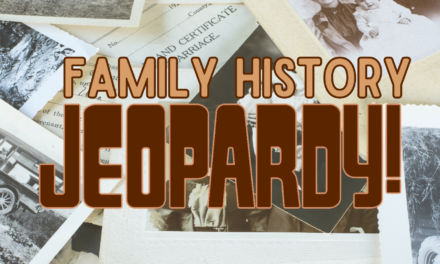As part of a recent presentation about my DNA journey, I reflected on what I had learnt during the process of undertaking family history research and working with my DNA results. Here are my six quick tips to making your adventure into family history research more rewarding, successful and fun.

Collaborate
The old saying, “Two heads are better than one,” definitely applies with regards to Family History. Working with others on particular aspects of branches of your tree can bring such a wealth of information. You may have information that others need and they in return will no doubt be able to provide information to allow you to fill gaps. Even having a second pair of eyes glance over documents, interpret handwriting and discuss avenues for further research can make the experience so much richer. Like me, you may discover some additional cousins along the way and together you can break down those brick walls, share resources and cross check your information and details.

Take Small Steps
Sometimes the task of researching your family tree can seem daunting if you don’t know much about your ancestors. In the same way, it can be overwhelming if you inherit family history documents that need to be sorted and worked through. Starting with small steps is the best mantra because any step taken will lead you along your journey. Many family historians say their research is never finished so why not start now with tackling a small job whether that be writing down what you know, setting up an organisation system or even ordering your own birth (and marriage) certifcate(s). So too with DNA, even working out how one of your matches fits into your tree can start you on the path of many future discoveries.

Keep Asking Questions
Asking questions is a key task of a family history researcher. What if? Who? Why? When? are all good questions to ponder. And don’t forget to keep returning to the same material and asking different questions. Sometimes we can overlook other details if we are focussed on answering particular research questions. By returning to our sources again and again we can gain further information and broaden our knowledge and understanding of our ancestors. For example, looking at probate packs in order to determine where assets were distributed I glossed over information about land records that were included and subsequently provided a further wealth of information.

Contribute
Becoming a member and contributing to family history groups and societies can be so rewarding. You instantly have people who are interested in your discoveries, approach to research as well as your ancestors’ stories. Sometimes these people will be more interested than your own family. By contributing to online forums, discussions and offering assistance to others when they require it can lead to some amazing connections and gems to facilitate your own research. You never know when someone listening or reading may have the best resource to offer. By contributing and presenting your research it requires you to synthesise your findings and make further sense of your discoveries. Give and you will receive.

No Dead Ends
There are no such things as dead ends in family history research. Sometimes you may research particular people only to find out that they are not your ancestors. However, at least you now have the knowledge of who they aren’t and you can start investigating alternatives. Also, you never know when researching something may lead you to other sources and clues. While searching for newspaper articles on Trove about a location for a friend, there on the same page was a reference to one of my ancestors that I had not seen before. It answered the question of where they had previously lived to what I already knew. So take note of all the signposts along the way, ensuring your journey will always be fruitful and productive.

Know Your Tools
Just like a “tradie” uses tools, so too as family historians we have to identify and learn how to use the tools available. This can include how to search birth, death and marriage registries or how to use DNA Painter for our investigation of DNA results. Spending time in learning these tools will be time well spent and sometimes reading about genealogical methodology and strategies can be very useful. I have recently been learning about best practices for transcription as I am finding I am need to transcribe many documents. Don’t be like the “poor carpenter who blames his/her tools” but rather be a master craftsperson who is proficient in employing the right tool for the job.
In conclusion the adage of “The more you put in, the more you will get out of it” is certainly true with family history research. We often don’t know where our investigations will lead us but by adopting a mindset of collaboration, continual learning and deep questioning, the journey can be very rich and very rewarding. Good luck.






Recent Comments